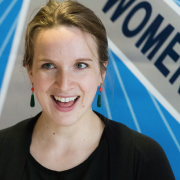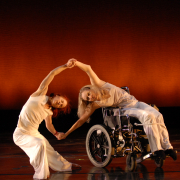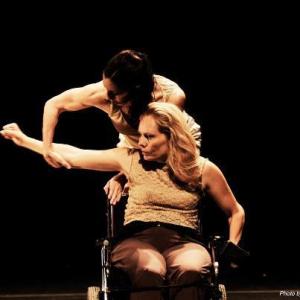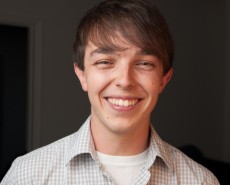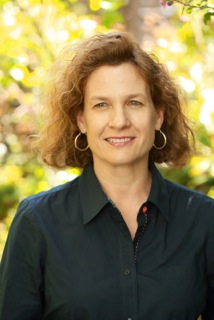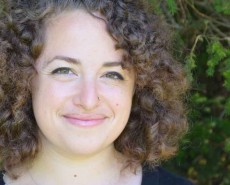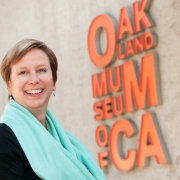Cultivating a Community with East Bay Center’s Jordan Simmons
 Jordan Simmons is the Artistic Director of the East Bay Center for the Performing Arts in Richmond. Having grown up in Richmond and studied piano at the center when he was young, Jordan returned to teach there after earning a music degree from Reed College in Oregon. Jordan has been the artistic director and driving force of the center since 1985.
Jordan Simmons is the Artistic Director of the East Bay Center for the Performing Arts in Richmond. Having grown up in Richmond and studied piano at the center when he was young, Jordan returned to teach there after earning a music degree from Reed College in Oregon. Jordan has been the artistic director and driving force of the center since 1985.
The East Bay Center for the Performing Arts is a surprising place of discovery. Here our student artists— through the breadth, depth, and passion of experiencing classical master works and cutting-edge forms from around the world—come to know the world’s great performance traditions, the beauty of one’s neighbor, a calling in life, and the life of the mind, in addition to the spark of young imagination.
Through the active creation of original music, film, theater, and dance, coupled with self-determined community projects, we emphasize the cause of social justice, the hard work needed to prepare, the skills to create, and the courage to perform. We will soon open our completely restored building and with this new capacity, over the next 50 years, we plan to reach 75,000 more youth to carry on this work of discovery.
Jordan was interviewed by Jessie Dykstra, East Bay Fund for Artists Coordinator at The East Bay Community Foundation and a 2013-14 EAP Fellow.
JD: Let’s start with how you began your work with the Center and your transition to leadership.
JS: I was a student at East Bay Center when it first opened following the assassination of Dr. King. In 1978, after graduating from college, I came back to Richmond, and was hired as a faculty member by my former teacher – Richard Letts – who was at that time the Center’s general director.
During that period, the Comprehensive Employment Training Act (CETA) was alive, and there were a series of police brutality suits in Richmond that had a huge impact on the community. One of the first things that I understood at that time – as both a very personal and a larger life lesson – was that we don’t control everything. In other words, communities like ours were vulnerable to external forces as well as historical forces.
Between ’78 and ’85, I went back and forth between Richmond and Salvador, Bahia doing field work with Brazilian musicians, activists and their communities. I worked in a neighborhood that was struggling to assert self-identify and self-determine their cultural values during the end of military dictatorship, all in light of historical issues with systemic violence and racial oppression. It was during a period that some called an abertura, or “opening.” So it was very important for me to see and to be part of what was happening in Salvador. Race, culture, class, art – all of these elements were part of the dialogue there in both a distilled and intense way.
East Bay Center hit a particular financial crisis in 1984. Following the police brutality suits and the loss of income to the cities from Prop 13, our income dropped. We also moved to the historic downtown area (where we are now), but downtown was a ghost town that was off-limits territory after dark. Suddenly there were no more middle class students coming here. So the budget ultimately went down from $400,000 to about $120,000, and we had back-taxes owed to the Federal Government.
There was also a struggle in those days (early 1980’s) to define the boundaries of a “community art” program. Society was asking: Who gets to study art? Whose art should be studied? Who should be teaching it? These questions were mixed in with our questions about: What do you do with young people when there are distractions in a society that is becoming more complex? What do we need from traditional art forms? And then what is the generative dialogue with the community? Some of these questions belonged to the time and some of them – it seemed – belong to the ages.
Ultimately, we came to understand that what the community needed and wanted interacted dynamically with what the faculty and artists of the Center had as a vision. And that dialogue has remained at the heart of what is a community-based organization – a generative engine of a program demanding attention to dialogue with its community.
JD: So what came out of that period of generation for you?
JS: We understood that the community wanted multiple things. They wanted a place where their children could practice arts that reflected their family heritage, but also try forms that reflected other heritages. They wanted youth to be able to find their gifts, but they also wanted to be prepared for the highest levels of academia and professional life. They wanted to find pride in place. They wanted to know and tell the stories of their families, of this neighborhood, and the conflicts and injustices of society here in this city. They wanted to see work that had production value and artistic depth, and they wanted to make their own art.
That dialogue drove the program structure that arose, and in that sense it also drove the jobs that people like me had to learn to do.
I was brought up to know literature and dramatic forms, to study certain kinds of music, and write and teach those things. But I certainly wasn’t prepared for the day-to-day issues of… well, I don’t even call it leadership. It’s the responsibility that my colleagues asked me to take on.
It’s like being part of a group that’s getting ready to eat together – somebody has to wash dishes, somebody has to go shopping for groceries, somebody chops wood, carries water, that kind of thing. You need to be useful – moving from principles and values into program ideas, moving from program ideas to exploration of what resources you have, and determining what you have to work with.
I’m very lucky that I’ve been able to see the evolution of the Center several times in these decades as things happened. In 2002, the bottom fell out again, and we went from one budget size to almost half. This was after growing for 17 years, following our path, creating works, telling the story of Richmond, adding curricular structure, being involved in the school district and working with them to promote public education. All those things had been growing for 17 years, and so that was an eye-opening point, remembering that we don’t control every thing. Humility, I guess.
When you’re forced to cut your budget or reduce your scale, you’re not just exploring and developing, but you’re making a stance about what’s worth saving and focusing on the things that represent those years of struggling and research and dialogue. For us, that became the Young Artist Diploma Program and the mission of engaging of young peoples through the discipline and inspiration of global art forms. The idea was not necessarily focused on getting to a conservatory level, but that through our program youth were gaining a vision of themselves and their community.
JD: So in reflecting back, were there specific roles that you felt like you played, things that you were learning individually as a leader?
JS: With our kind of mission, it always seemed to me that in order to be a leader, you had to be mindful of listening to community dialogue and trying to support that dialogue. And sometimes that meant taking criticism or developing a new vocabulary or language. It also meant being clear about the values of the institution, which meant sometimes saying “no” to some people. You try to advocate for the small decisions that support the larger ideals. So in that sense, I have always been challenged to keep in mind that all of us individually have to be strong, but collectively we have to keep going back to that dialogue. And that has become part of the culture of the institution.
Personally, I have continued to develop myself as a performer and teacher. In order to be part of the community dialogue honestly, I had to give whatever time I could spare to my own practice and teaching, my own growth and understanding. And that of course is an endless thing, but it keeps one young!
I would say the privilege I’ve been allowed was to be a representative of this group. There are folks in this organization who are my elders, like older brothers and sisters, and I have been asked to represent us wherever in the world I have to go, whether to West Africa to organize a performance, or the mountains of Mexico to research curriculum, or New York to plan with supporters. I have had to learn about the world and then come back. So that has been for me a challenge – and a privilege– to go out, try to distill those forces, and then bring them back to work out together.
JD: What would you say are the parts of the job you wish you could do all the time and the parts of the job you wish you didn’t have to do?
JS: I came back to the Center in 1978 to be teacher. Being a teacher also means being a student. As a teacher one is always growing, and when I have time for a class or a project, that is something I am most happy about. Being with young people is endlessly inspirational and beautiful.
I really enjoy now seeing the 30-somethings, that mid-generation of alumni who are returning here as faculty and staff to take up layers of responsibility. I really like seeing that the culture here is growing and changing and becoming more mature. It doesn’t have to fight the same battles we had to fight. It has new struggles to overcome – new challenges. I am watching those colleagues develop themselves and contribute to this community and institution. It’s exciting to see that the younger generation is building, broadly and deeply sinking their roots, and they then have new ideas.
JD: I’m curious to know what you are seeing right now in the Bay Area arts community, how you are feeling about working as an arts professional and where you see the community going from here?
JS: I actually have little to say about that! Maybe twenty years ago I did, when I had more bouncy energy. But I don’t really think of myself as an “arts professional.” I am striving to be a better musician and maker of theatre; I am striving to be a better teacher and student. And I’m really striving for the Center to have ever more integrity in what it does, that we accompany our young people where they are, and that we don’t compromise our values or integrity of artistic training. Maybe if we work on that really hard here, we can be a good example to other organizations.
I think society struggles with the difference between art as commodity versus the opportunity for every kid and every person to experience art and to discover their gifts, to have the time and wherewithal to participate in art and not just take it in through passive media. And I know there aren’t that many places that do work in that realm that continues to be heard. But I have no magic wand or crystal ball.
JD: So, it’s more about what you’re doing now versus trying to anticipate what may come next?
JS: Yes, there are a lot of smart people who have time to anticipate and show the trends and all of that. I think no matter how that happens that we want young people to value this complex environment and be ready for those changes that are happening both in art and institutions, in art production, art appreciation, art funding, or whatever it may be.
I remember asking one of my teachers many years ago what he thought about certain theoretical questions regarding intonation and scale. He looked at me and smiled and said, “Do you want a nineteenth century answer, the twentieth century answer, or the answer that’s coming?” By that he meant that over the ages we’ve had certain theories about major and minor scales, chromatic scales, and pitch, rhythm, timbre – and tried to decide which were sophisticated. And so we can make theories about these things, but in reality we’re all trying to be more human in our institution and more attentive to young people’s growth and discovery. And, I think we have to concentrate on that.
JD: I’ll close with this question: For the students in your community or anyone else who might be considering work in the arts, do you have any words of wisdom you would give them?
JS: Fundamentals are always good. And following your own calling – finding out what is your gift or your love. What’s calling you to work hard? Then take time to make the effort, because that effort is rewarding. We all want to be good; nobody has to try to want to be good. So, then you have you have to pay attention to what is really feeding you, so that you can go back to your fundamentals and strengthen yourself as an artist.
Be open to change and to the struggle of the tough times as well as the good times. And enjoy them because ultimately your evolution is a response to both.
There’s a quote, “Does the path choose the walker, or does the walker choose the path?” I don’t know, but the point is that every day we have to wake up and ask.
Jessie Dykstra is the coordinator of the East Bay Fund for Artists at the East Bay Community Foundation. She is also responsible for managing the Foundation’s scholarship programs and supporting the grants administration process. Before joining the Foundation Jessie was an institutional fundraising consultant with Quinn Associates, an arts management consultancy serving small and mid-sized organizations in the Bay Area. She previously held positions in Development at The Wooden Floor and the California Institute of Integral Studies. Jessie is a candidate in the MBA program at the Lokey Graduate School of Business at Mills College.
Cultivating a Community with East Bay Center’s Jordan Simmons is part of the series The Heart of It: Stories from Leaders in the Bay Area Arts Community, an EAP MADE Project. Learn more about the series by visiting the MADE page in our website.


